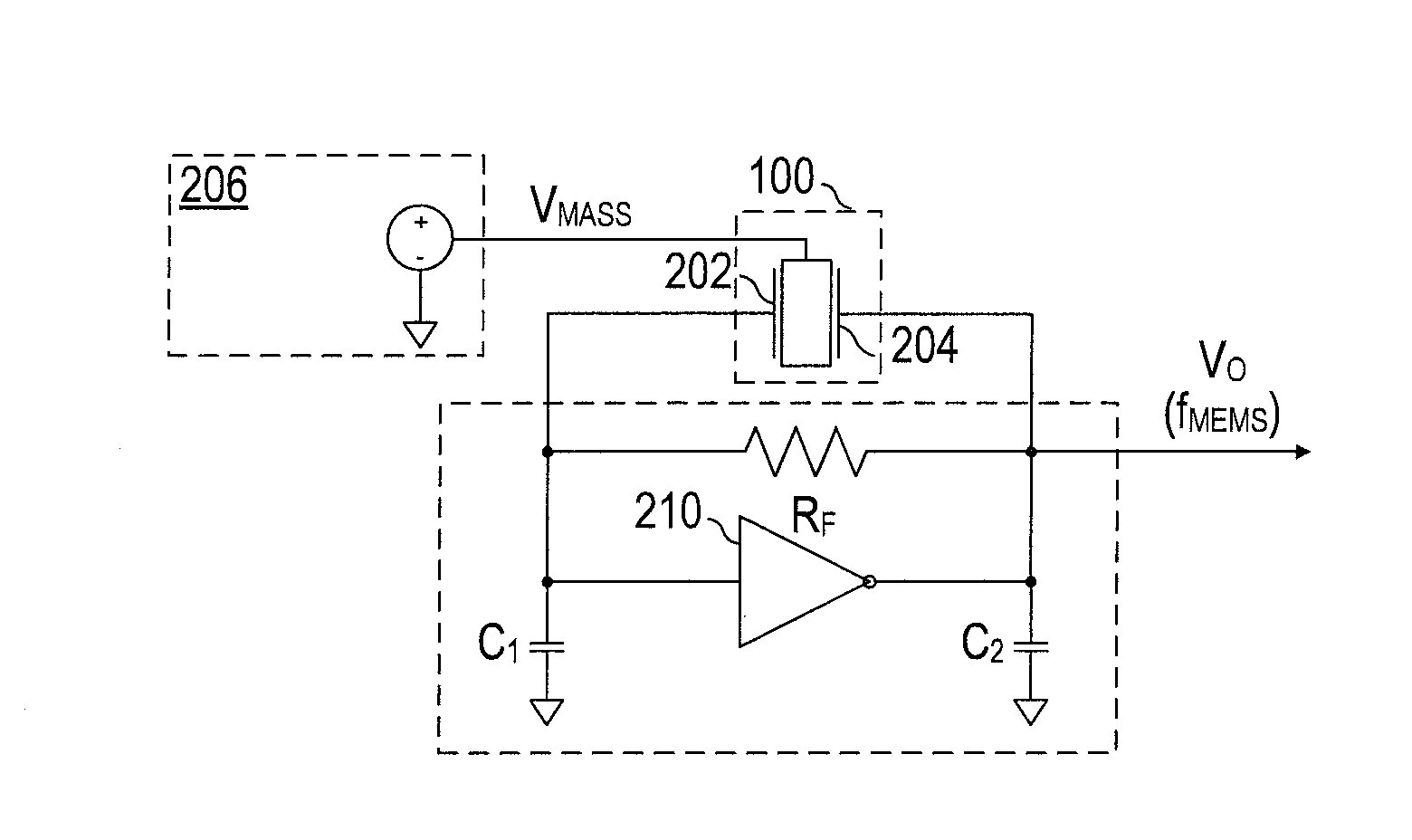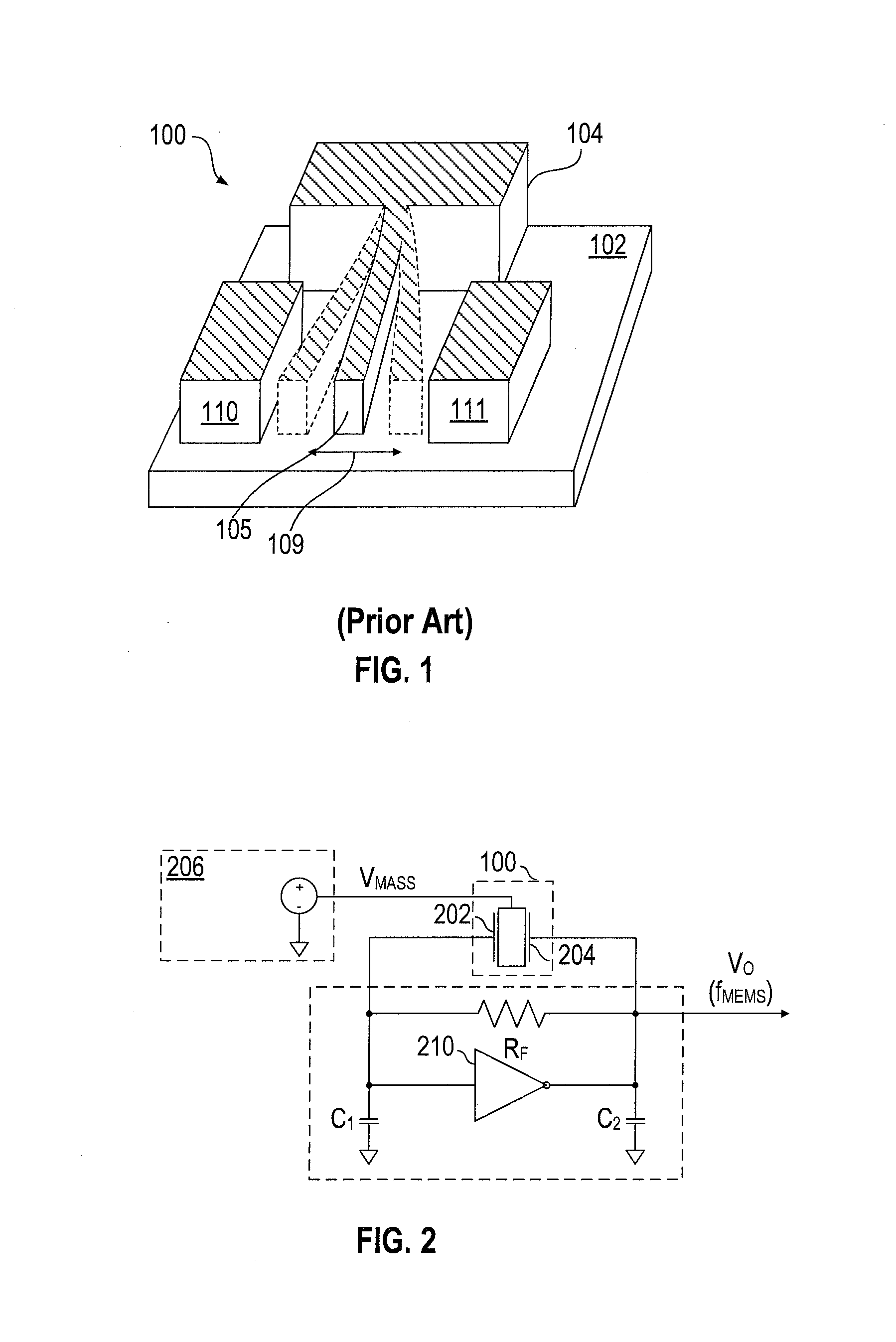Suspended passive element for MEMS devices
a passive element and passive element technology, applied in the field of microelectromechanical systems, can solve the problems of low noise and low power consumption of sensors and/or actuators, mems devices targeting applications requiring high-precision, and not meeting the target specification, so as to reduce or eliminate the transfer of strain
- Summary
- Abstract
- Description
- Claims
- Application Information
AI Technical Summary
Benefits of technology
Problems solved by technology
Method used
Image
Examples
Embodiment Construction
[0035]Referring back to FIG. 1, MEMS device 100 may be modeled as a spring-mass system having a resonant frequency,
f0=12πkm,
where k is a constant indicative of the spring stiffness, m is mass of the resonator, and f0 is the resonant frequency. In general, the quality factor, Q, characterizes a resonator's bandwidth relative to its center frequency. The quality factor may be represented as Q=2πfom / γ, where γ is damping coefficient (e.g., due to fluid in a cavity surrounding the mass). A higher Q indicates a lower rate of energy loss relative to the stored energy of the resonator, i.e., oscillations die out more slowly. An oscillator with a higher Q resonates with higher amplitude but for a smaller range of frequencies around that frequency over smaller bandwidth. To achieve a high-precision, low-power resonator, a high mass may be desired so that the device can have a high stiffness. Increasing mass m increases the quality factor of the resonator if the other relevant parameters for ...
PUM
| Property | Measurement | Unit |
|---|---|---|
| Young's modulus temperature coefficient | aaaaa | aaaaa |
| Young's modulus temperature coefficient | aaaaa | aaaaa |
| Young's modulus temperature coefficient | aaaaa | aaaaa |
Abstract
Description
Claims
Application Information
 Login to View More
Login to View More - R&D
- Intellectual Property
- Life Sciences
- Materials
- Tech Scout
- Unparalleled Data Quality
- Higher Quality Content
- 60% Fewer Hallucinations
Browse by: Latest US Patents, China's latest patents, Technical Efficacy Thesaurus, Application Domain, Technology Topic, Popular Technical Reports.
© 2025 PatSnap. All rights reserved.Legal|Privacy policy|Modern Slavery Act Transparency Statement|Sitemap|About US| Contact US: help@patsnap.com



